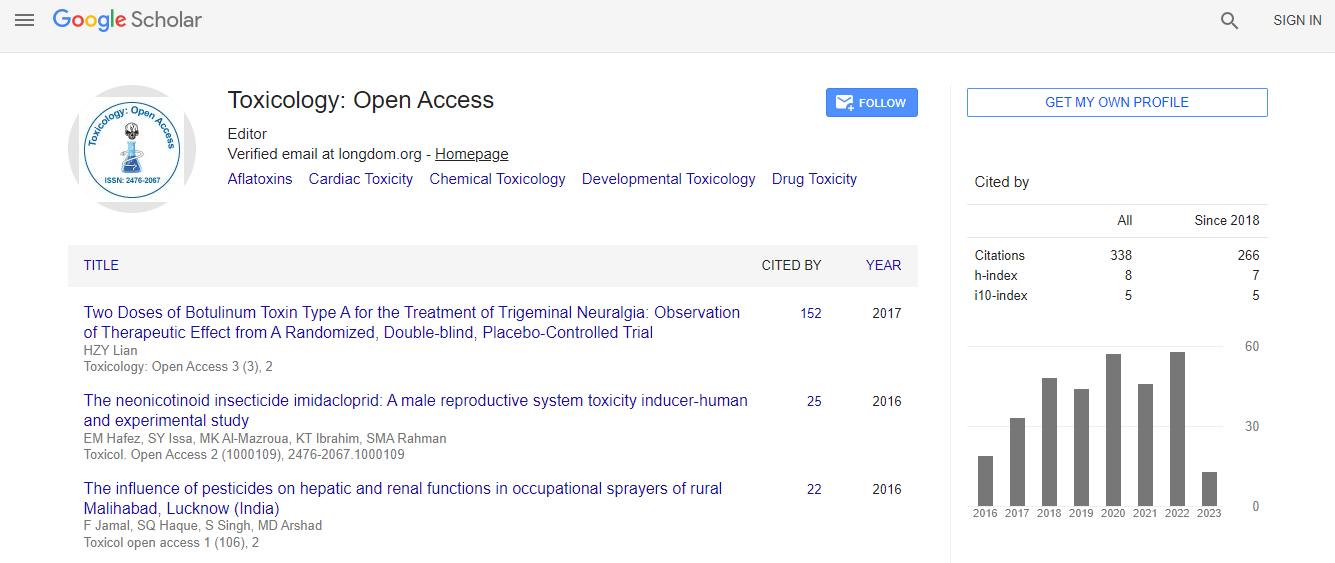Research Article
The Persistent Neurotoxic Effects of Methamphetamine on Dopaminergic and Serotonergic Markers in Male and Female Rats
Lisa M McFadden1,2* and Paula L Vieira-Brock11Department of Pharmacology and Toxicology, University of Utah, Salt Lake City, UT 84112, USA
2Division of Basic Biomedical Sciences, University of South Dakota, Vermillion, SD 57069, USA
- *Corresponding Author:
- Lisa M McFadden
Division of Basic Biomedical Sciences
University of South Dakota
Vermillion, SD 57069, USA
Tel: 605-658-6346
E-mail: lisa.mcfadden@usd.edu
Received date: July 26, 2016; Accepted date: September 02, 2016; Published date: September 06, 2016
Citation: McFadden LM, Vieira-Brock PL (2016) The Persistent Neurotoxic Effects of Methamphetamine on Dopaminergic and Serotonergic Markers in Male and Female Rats. Toxicol Open Access 2:116. doi:10.4172/2476-2067.1000116
Copyright: © 2016 McFadden LM, et al. This is an open-access article distributed under the terms of the Creative Commons Attribution License, which permits unrestricted use, distribution, and reproduction in any medium, provided the original author and source are credited.
Abstract
Objective: Methamphetamine (METH) is a highly addictive substance abused world-wide in both males and females. Preclinical studies in male rodents suggest that large-dose exposure to METH can lead to persistent neurotoxic consequences to various brain regions. However, little research has focused on the potential role of sex in the neurotoxic consequences of METH exposure.
Methods: The current study exposed male and female rats to large-doses of METH (4 injections of 7.5 mg/kg) or saline. Hyperthermia was promoted in the females exposed to METH such that similar hyperthermia occurred in males and females. Rats were sacrificed 8 d later and neurochemical changes were assessed in the striatum, hippocampus, frontal cortex and olfactory bulbs.
Results: Results revealed that male and female rats exposed to METH had similar decreases in dopamine (DA) transporter (DAT) immunoreactivity in the striatum, serotonin (5-HT) content and 5-HT transporter (SERT) function in the hippocampus, and 5-HT content in the frontal cortex. However, female rats exposed to METH had greater decreases in 5-HT content in the olfactory bulbs compared to sex-matched controls while male rats exposed to METH did not significantly differ from sex-matched controls.
Conclusions: These findings suggest that when similar hyperthermia is maintained between male and female rats exposed to METH, the neurotoxic effects of METH were similar in some, but not all brain regions.

 Spanish
Spanish  Chinese
Chinese  Russian
Russian  German
German  French
French  Japanese
Japanese  Portuguese
Portuguese  Hindi
Hindi 